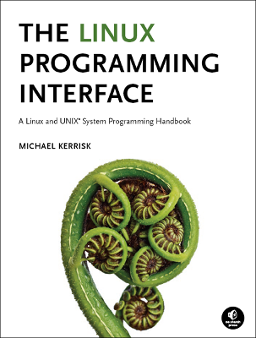A Java terminal IO library designed to communicate and control the serial (RS232) drivers.
Serial4j is a terminal I/O library primarily built on top of POSIX base file API <fcntl> for file control operations, <unistd> for Unix std R/W operations, <dirent> for directory entry dir operations, and <sys/ioctl> for controlling modem bits.
| Contents | Specifications |
|---|---|
| Problem Definition | Controlling the serial ports with the most possible minimalistic approach without irrelevant multithreading/processing bloatware. |
| How does Serial4j approach the problem? | Serial4j ports the Unix/POSIX standard terminal IO library to the Java platform without adding extra threading stuff, leaving them to the user application, the framework is sub-divided into layered APIs, of which the classes starting with Native- prefix acts as the literal native library. |
| Does Serial4j provide a threading/processing model? | No, it doesn't; but as it evolves, it may provide a threading model, however mostly on a different module. |
Can I use libserial4j dynamic library only? |
Yes, you can do this and there are ongoing optimizations to remove the JNI source binaries for C++ applications cross-compatibility. |
| Is it easy to build my own serial monitor on top of Serial4j? | Yes, yes, and yes, the serial/monitor package has the right tools! |
| From where should I start, should I learn the Unix/POSIX interface first? | Currently, you can start testing the examples provided in the serial4j-examples modules, but knowing how the Unix terminal works will help you to understand the bit manipulations taking place at the terminal flags part. |
| What about other operating systems and machines? | The library hasn't been tested on Windows, Mac, and Android, yet, it should work on Unix/POSIX standard-based systems, that include Mac and Android! |
| What's jMonkeyEngine? | jMonkeyEngine is a complete code-first approach modern 3D game engine written primarily in Java, Serial4j has an example operating a serial monitor inside a game, COOL! |
| Can I use Serial4j with other game engines (C++/Python)? | Of course, you CAN, as Serial4j is built into a dynamic library libserial4j that's independent of Java! |
- Full control on the serial devices over the terminal I/O.
- Full control on the serial port, the original RS-232 DB-25 port.
- SerialMonitor API.
- Human Interface Device (HID) API providing a serial-device abstraction, and common devices standardizations.
- Powered by a variety of examples and tech-demos.
Preface: The binding library consists of the main package serial4j.core.terminal which houses the terminal control facilities for opening, reading and writing to
a terminal device in addition to setting the terminal line speed (baud rate), controlling the input and output queues and controlling the UI of the terminal driver.
- The API
serial4j.core.terminalhouses the terminal IO control and the native IO streams, it is considered the backbone of the Serial4j framework, the monitor API widely utilizes it. - The API
serial4j.core.serialhouses the serial monitor and the serial port that is internally manipulated using the terminal IO API. - The API
serial4j.core.flaghouses the interface for the appendable bit masks. - The API
serial4j.core.modemhouses the modem bits (pins) controller based on the standard DB-25 RS232 port driver, with the help of the Terminal API, a developer acquires full control on the serial ports. - The API
serial4j.core.errnohouses an interpreter pattern that parses native runtime caught errno codes, and convert them into Java exception thrown against the JRE, a developer is capable of catching them and recovering based on their preferences.
An average daily code should directly interact with
serial4j.core.serialAPI, particularly theSerialMonitorAPI. Custom setups will usually require the use of the terminal API, too. Of note that each serial monitor instance is associated with a terminal device instance which is available with a single indirection operation viaSerialMonitor#getTerminalDevice(), and available from the serial monitor entities (read/write entities), as well.
The Java Native Interface API is a private API, and subjected to breaking changes in the contemporary future releases. Developers are discouraged to utilize it via the Java Reflection API, you are very welcome to open an issue and explain the library defects that forced you to utilize the native API.
# building and assembling
┌─[pavl-machine@pavl-machine]─[/home/twisted/GradleProjects/Serial4j-v1]
└──╼ $./gradlew :serial4j:build &&
./gradlew :serial4j-native:compileX86_64 &&
./gradlew :serial4j-native:copyBinaries &&
./gradlew :serial4j-native:assemble &&
./gradlew :serial4j-native:copyToExample
# selectively running an example
┌─[pavl-machine@pavl-machine]─[/home/twisted/GradleProjects/Serial4j-v1]
└──╼ $./gradlew :serial4j-examples:run \
--args="com.serial4j.example.jme.RollingTheMonkey /dev/ttyUSB0"- The package com.serial4j.core.hid contains the core base API
HumanInterfaceDevicethat houses a report descriptorHumanInterfaceDevice.ReportDescriptorand a decoder interfaceHumanInterfaceDevice.ReportDescriptor.Decoder, and an event handler interfaceHumanInterfaceDevice.ReportDescriptor.DecoderListenerthat is dispatched when the decoding algorithm defined by the decoder interface has finished-up decoding input data. - The abstraction
StandardSerialDeviceis a base implementation that associates aTerminalDeviceto the abstract interfaceHumanInterfaceDevice, further standardization or specifications of the serial-based HID interfaces should extend this class, and its own decoder and data registry data structures. - The rest of the packages are standard examples for the
StandardSerialDeivce, theDataFrameDeviceis a standardization that provides the ability to dynamically read data separated by the line feed character (LF-'\n'), and accumulate it into a dataframe buffer without the need to specify a report length to the report descriptor object. - This Serial-HID API is based primarily on the usb.org-hid-2001-specification, and the linux-kernel-hid-intro.
| Contents | Redirections |
|---|---|
| The Linux Programming Interface & The Man Page |  |
| Advanced Programming in the Unix Environment by Richard Stevens |  |
| Java & JNI |  |
For C/C++ references, find a language reference, either the IBM's or the GNU's, choose whichever suits you.
And, I will leave you with my gems (controlling a jMonkeyEngine vehicle using JoystickModule connected to the ADC unit of the ATMega328p 8-bit MCU):


